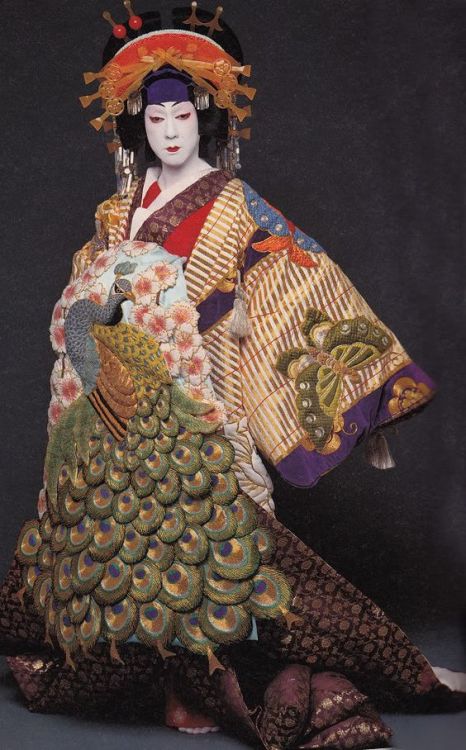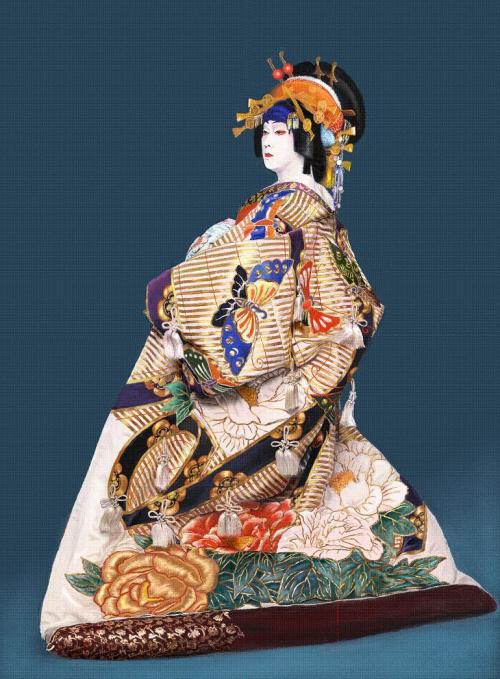arelativenewcomer:Costumes of high-ranking courtesans, oiran, are among the most spectacular in ka
arelativenewcomer: Costumes of high-ranking courtesans, oiran, are among the most spectacular in kabuki. They are characterised by extravagance and effusion of colours and patterns. At the first glance they might seem a little overwhelming, but a skilful and talented actor can perfectly handle the unwieldy bulk of fabric and make it just another, very persuasive means of expression. The most conspicuous elements of the costume are the outer kimono (uchikake) usually dazzlingly colourful, and the obi sash tied in the front, with a large knot frequently adorned with embroidery. The heavy wigs are decorated with a number of tortoiseshell hairpins. Here’s my selection of photos of Bandō Tamasaburō playing oiran in three kabuki plays I have seen recently. The first play is Kagotsurube Sato No Eizame by Kawatake Shinshichi III, a tragic story of the courtesan Yatsuhashi (you can watch the play [here; with further parts following in due order]; for a summary, see [here]; for a more detailed summary and few words of further description, see [here]). The second play is Akoya—in fact not a whole play, but one act of Matsuda Bunkōdō and Hasegawa Senshiʼs work Dan-no-Ura Kabuto Gunki (I already mentioned this play with references [here]). The play is rarely staged due to the fact that the main role of the eponymous courtesan Akoya requires an actor able to play three different traditional instruments on stage. Last but not least, there is the defiant Agemaki from the very famous play Sukeroku Yukari no Edo Zakura (the play can be watched [here: Part 1; Part 2]; for the summary, see [here]). Top to bottom, left to right; Bandō Tamasaburō as: (1) Yatsuhashi, photo by Kishin Shinoyama [source]; (2) and (3) Akoya, both photos by Kishin Shinoyama [source 2], [source 3]; (4) Akoya, photo by Okamoto Takashi [source]; (5) Agemaki, photo by Kishin Shinoyama [source]; (6) Agemaki, photo by Fukuda Naotake [source]. -- source link
Tumblr Blog : arelativenewcomer.tumblr.com





